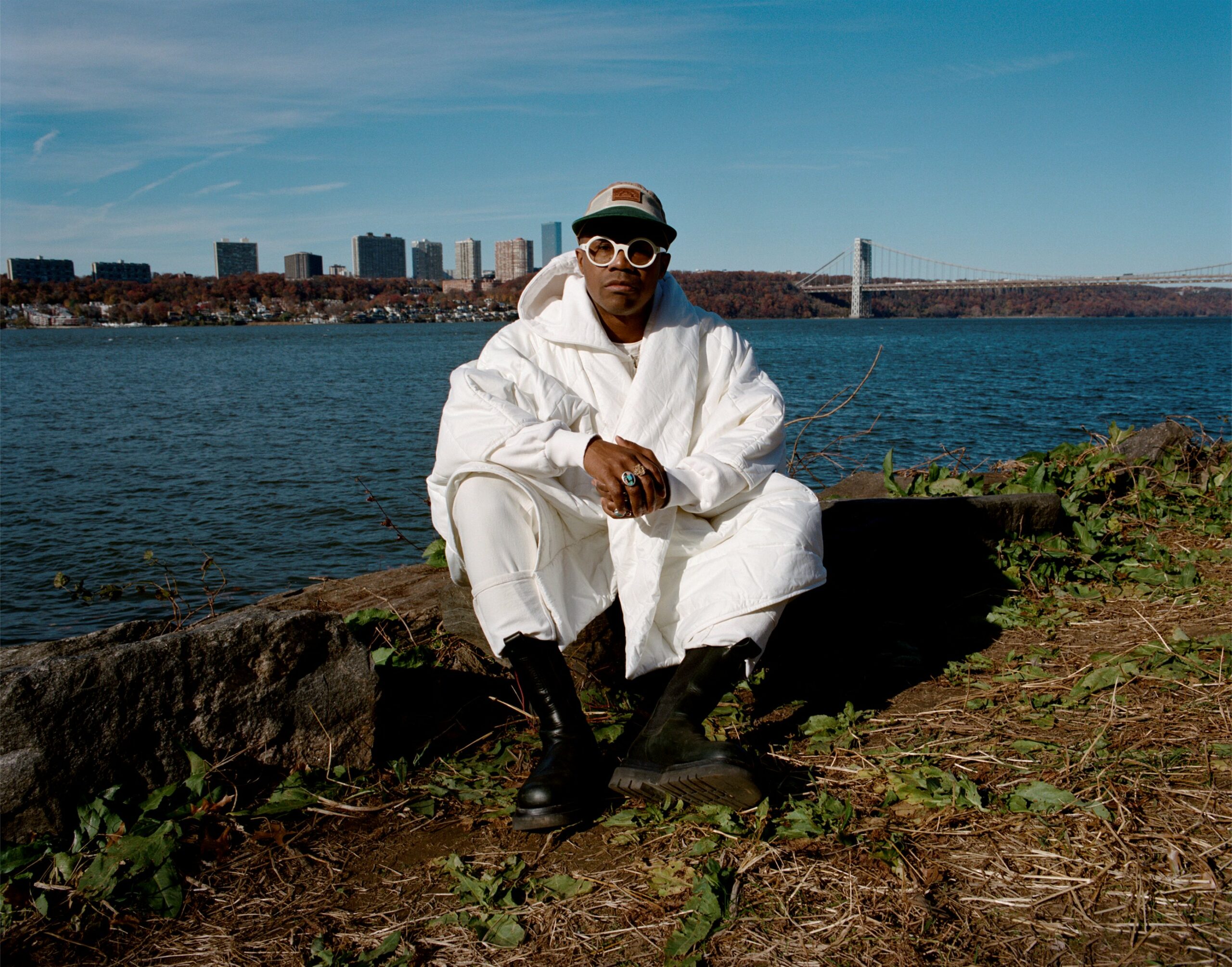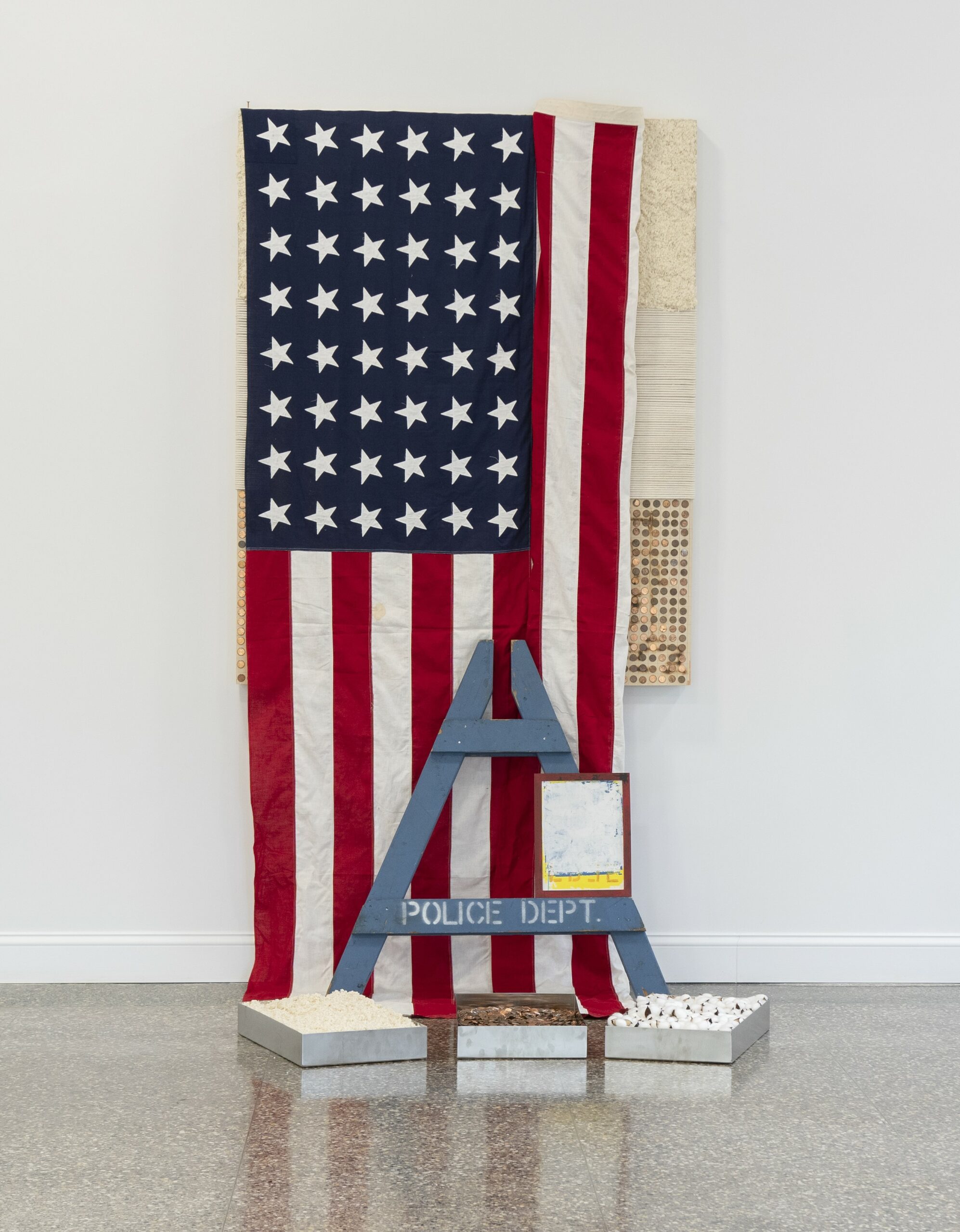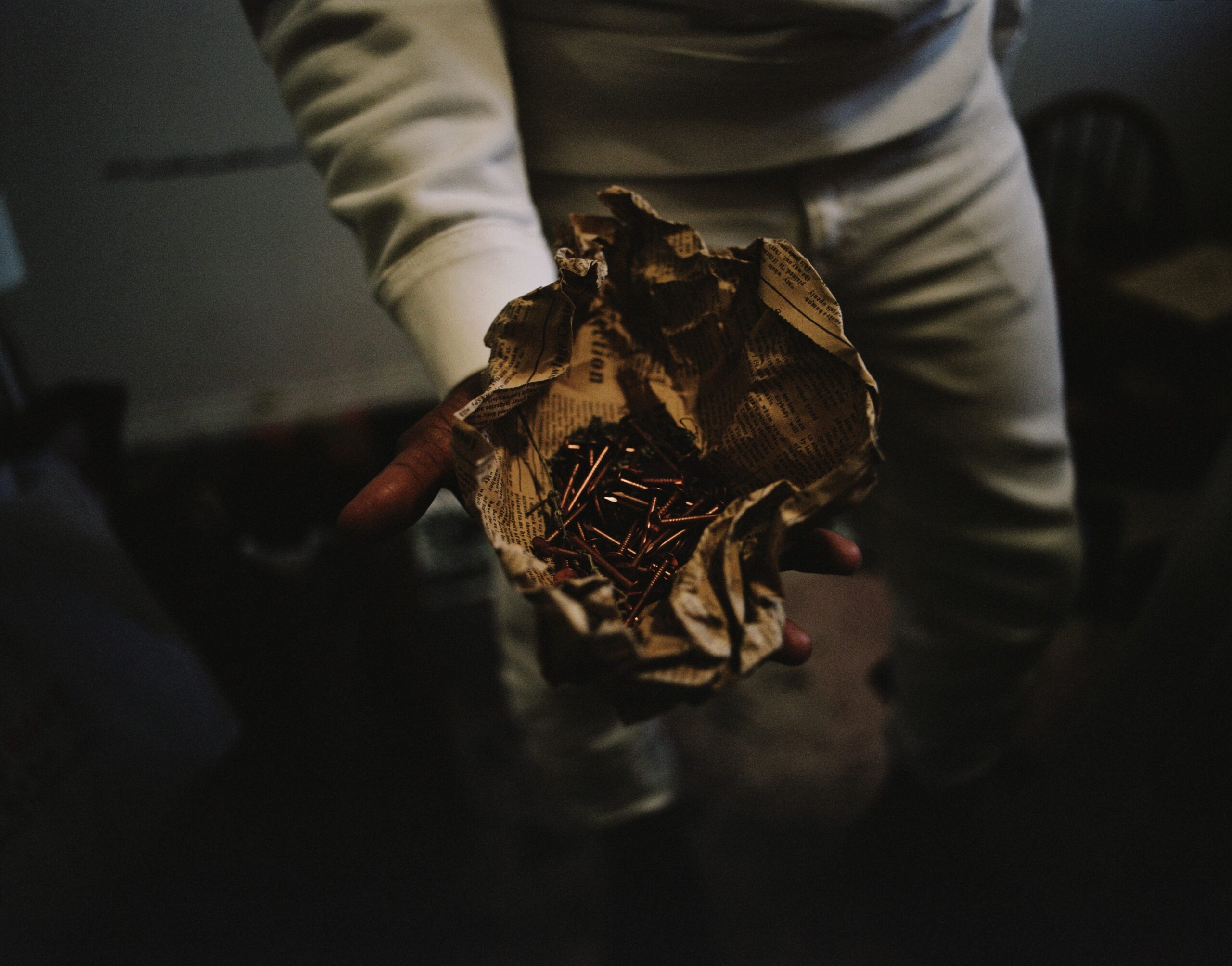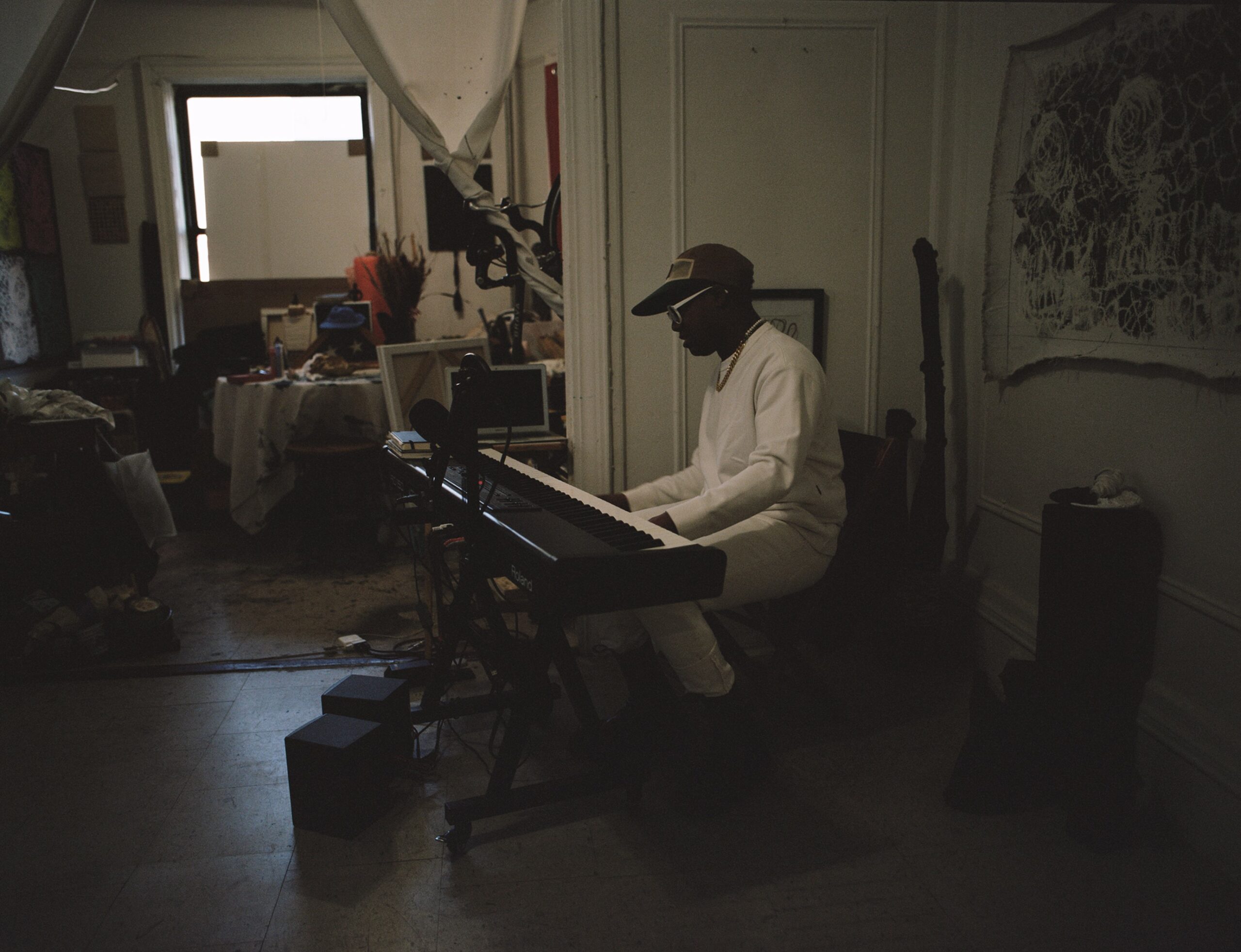
“I want people to ask me why I’m using sand, rice, rope, pennies, nails, chains, and wood in the work so that, socially, we’re forced to address the truth regarding historical issues of race inequality that may have changed in shape, but are still the pulse of our country today,” says Jamel Robinson. Robinson is a Harlem-born and based visual artist who is recontextualising history. His current show, The Eagle Flies Free, But Why Not Me? challenges hegemonic understandings of the black American experience through dynamic assemblage. Robinson criticises a taught narrative by confronting reality through materiality. The materials used to create the works in Robinson’s exhibition speak to Black America’s present and historical realities of grief. The exhibit opened November 11, 2023, at Gallery 495 in Catskill, New York and will remain open until January 13, 2024.
Connected by the Hudson River, the Harlem native is showing 100 miles north in the quaint town of Catskill at the newly opened Gallery 495. The gallery is owned and directed by Mike Mosby, a Hudson Valley native with the ambition to develop the area as an arts destination. Gallery 495 is currently inhabited by Robinson’s didactic works, ranging from a ladder made of chains, stark white military boots, a police barricade, and an American flag that folds up against the gallery floor. Most of the work in the show was made at the Long Meadow Arts residency in the neighbouring town of the Berkshires, Massachusetts.


Through his art, Robinson is defining the framework of devastating American loss and great American triumph. Robinson conducts himself in a way which mirrors this triumph. A few days ago, I had the pleasure of meeting Robinson at his studio and taking a walk down to Riverside Park together. After spending some time by the water, we headed up to his studio, walls lined with boxing gloves, where we spoke between interludes of Robinson performing dramatic tunes on the piano and reciting spoken word poetry.
Robinson grew up in the Sugar Hill section of Harlem. His studio is in the same apartment in which he grew up. He was raised by both his mother and grandmother, and he describes his childhood as happy. Robinson just hit his 20th solo exhibition.
“I got into visual arts through poetic practice. I had spent my formative adult years writing and performing poetry. Eventually, my life unfortunately took a wild turn for the worse, and I became addicted to drugs and alcohol. I spent a good 12 years battling my addiction, and 13 years ago, I got sober. After that, a good friend, a curator, asked me to paint a poem on a canvas and participate in a group exhibition. That was the first time I can recall intentionally going to buy art supplies in order to create.”
He recalls that a month later, someone very close to him passed away, and it was the catalyst that thrust him into his practice. He bought pencils, paint, and brushes and began stencilling onto canvases. Soon after, he felt compelled to paint directly on the canvas and from there, his abstract self-portraiture practice was born. Robinson remembers throwing out his furniture and covering the whole Harlem apartment from floor to ceiling with paint, “It was a madhouse, and that’s how I taught myself to paint,” he says with a humble smile.

Years later, his work has materialised as beautiful assemblage pieces. Robinson explains that this was instigated by his desire to build, “How can I use a staple gun? How can I use glue? What can I nail in where?” he wonders. He then figures his incessant need to collect and build stemmed from the desire to have texture in his work, similar to the essence of America. “It’s the texture of America that I’m building. I’m using materials to illustrate America’s texture, and if the work happens to land on being beautiful, then it is exactly what America is.”
While viewing Robinson’s work, we must consider context and history. We should honour Robinson’s practice the same way he honours his predecessors. Robinson reveals, “A real through line in my practice comes from Nina Simone’s “Strange Fruit”. I made a large amount of work that’s in my current show at Gallery 495 to that one song. Nina Simone always hits it on the head for me because of the juxtaposition between the story she’s telling and the beauty of her voice. That’s what I’m trying to evoke in my work. Artists like that have sealed their place in history because they’re committed to telling stories that will last a lifetime.”
Each material is deep with meaning and rich in story, as outlined by Robinson himself: Firewood represents the reclamation of something discarded. Pennies serve as a metaphor for how marginalised groups have been treated throughout American history. Rice is used because it was often stored away in the hair of enslaved individuals as a means of securing food or traded as currency. Sand is a symbol of the way those enslaved were taken and displaced from coast to coast. Boxing gloves represent the constant fight for systemic equality.

When I asked Robinson about the title of the show, he explained that eagles are a symbol of American prowess and freedom. They soar uninterrupted throughout the country as a protected species, contrary to the plight of marginalised Americans. Robinson outlines that “Eagles are a protected species; if you kill an Eagle in this country, we know what justice will look like. Yet police can kill a black man, and we may not know what will happen as a repercussion.”
Robinson’s work is personal and based on experience. His freedom lies in his expression, artistry and success. His practice is a form of liberation and denies the notion that he will be held back despite the infrastructure of our country. Our inquisitive viewership becomes a pipeline to collective assimilation; that is the subtext that runs through his work. Robinson’s practice is a testament to history, a persistent narrative of the realities of America and undeniably beautiful. “The idea that I live with on a daily basis, whether it’s directly affecting me or not, is that America didn’t plan for me to get this far. I have an incredible life.”
Words by Gwyneth Giller






